В транзактном анализе выделяются четыре жизненные установки относительно себя и других, которых может придерживаться личность:
1. Я не в порядке, вы в порядке.
2. Я не в порядке, вы не в порядке.
3. Я в порядке, вы не в порядке.
4. Я в порядке, вы в порядке.
Главным у них был один вопрос: объединение.
И по этому вопросу одна проблема: чрезмерное разнообразие того, чем занимаются нелперы в каждой группе/ центре.
Вот так возникает задача ревизии и унификации различных "штуковин", которые относятся/ не относятся к НЛП.
И вот, оказалось, что определить этот список что есть НЛП простым обсуждением невозможно.
И тогда, решили, что будут определять этот список голосованием.
Последняя постановка вопроса вызвала явные/ скрытые эмоции: а вдруг, собственная активность того или иного центра не попадёт в официальный список что есть НЛП.
А рядом прохаживаются павлинами несколько монстров в ранге со-создателей НЛП, пребывая в уверенности, что уж их активность, несомненно, уже занесена в анналы нелперской истории/ содержания.
Например, вчера заменил/ восстановил картинки в теме Иное моделирование.
Re: Личностная трансдеривация: глубинное описание + ВАК
metanymous в посте Metapractice (оригинал в ЖЖ)
--Приведение к полной ГС это не конечный результат. Хоть у них это сильно эээ размазано, но полная ГС по БиГам это возможная, например, фраза - кто-то что-то кому-то сделал с помощью чего-то. Дальнейшее уточнение БиГи называли уже не восстановление ГС, а именно восстановление связи ГС и Опыта человека.
А что такое есть «Опыт человека», который как-то отделён от глубинных структур и не выражается через ГС?
Т.е они предлагали 2-х уровневый процесс: а) восстановление полноты ГС; б) восстановление связи ГС и Опыта человека.
Я не знаю, что такое есть «опыт человека».
И как дополнение: Они не шли/не предлагали раскрывать факультативные валентности глагола, но настаивали на, именно инструменте в качестве обязательной, типа - с помощью чего сделал - что сильно смахивает на штуковину, которая потом трансформировалась в понятие интерфейса, т.е некая управляющая/переключающая вставка.
Т.е. опыт человека, это такая штуковина, которая потом выражается в некий материальный («железный»?), интерфейс.
Re: Статьи о влиянии диафрагмального дыхания на Респира
metanymous в посте Metapractice (оригинал в ЖЖ)
продали старую сеть академ.орг
а новые владельцы перестали поддерживать/ ограничивают файлохранилище с картинками
потихоньку веду работу по восстановлению где можно/ замене картинок
«Права человека — это химера и ложные движения европейской цивилизации. Это огромная диктатура лжи. Права человека нигде не соблюдаются. Все великие цивилизации строятся на обязанностях, нельзя права человека ставить над его обязанностями. Те, кто не исполняет обязанности, не может иметь права.
https://www.facebook.com/a.konchalovsky/posts/1815835971764483
![[pic]](http://l-stat.livejournal.com/img/userinfo.gif?v=17080?v=111.1)
He can always tell the truth (23) Этот лживый детектор лжи или миф о полиграфе
metanymous в Metapractice (оригинал в ЖЖ)
Оригинал взят у masterok в Этот лживый детектор лжи или миф о полиграфе

Ложь и правда – взаимоисключающие социальные понятия, появление которых было обусловлено необходимостью коллективного общения людей.
На заре первобытно-общинного строя, когда каждый член общины должен был выполнять определенную полезную работу для племени, «эффективность» его деятельности определялась тремя факторами: умением и физической подготовкой, личным желанием (уровнем мотивации), а в экстремальных условиях — элементами смелости (трусости).
Добросовестность деятельности отдельных членов племени определял вождь. Элементы трусости, приведшие к гибели членов сообщества, карались смертью или изгнанием из племени, что в конечном итоге было одним и тем же. Жестокость наказания заставляла провинившегося использовать все средства для своей защиты, включая ложь. Вероятно, тогда и возникла принципиальная необходимость отделять ложь от правды. Таким образом, потребность в «детекторе лжи» возникла тогда, когда коллективная деятельность стала реальностью, когда судьба одного человека стала зависеть от добросовестности другого.
Проблема выявления лжи или обнаружение неискренности в поведении человека имеет довольно давнюю историю, потому что в основе этого испытания лежит утверждение, что наше телесное состояние связано очень тесно и прямо с душевными переживаниями.
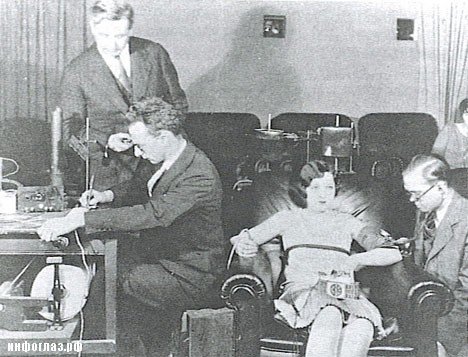
Толчком для развития инструментальной детекции лжи послужила работа итальянского физиолога А.Моссо (1875 г.). В своих исследованиях он показал, что в зависимости от величины эмоционального напряжения меняется и ряд физиологических показателей.
Им было установлено, что давление крови в сосудах человека и частота пульса меняется при изменении эмоционального состояния испытуемого.
В 1885 году итальянский врач-психиатр Ч. Ломброзо использовал первый прибор для детекции лжи – гидросфигомометр, который регистрировал у человека изменение давления крови. Через семь лет, в 1902 году, с помощью инструментальных методик удалось впервые доказать в суде непричастность обвиняемого в совершении преступления.

В 1914 году итальянец Бенусси использовал прибор для регистрации дыхания при проведении допросов подозреваемых в совершении преступления. В качестве информационных показателей использовались частота и глубина дыхания, регистрируемого с помощью прибора пневмографа. Позже с помощью этого прибора стали определять продолжительность вдоха и выдоха, задержку дыхания на вдохе и выдохе.
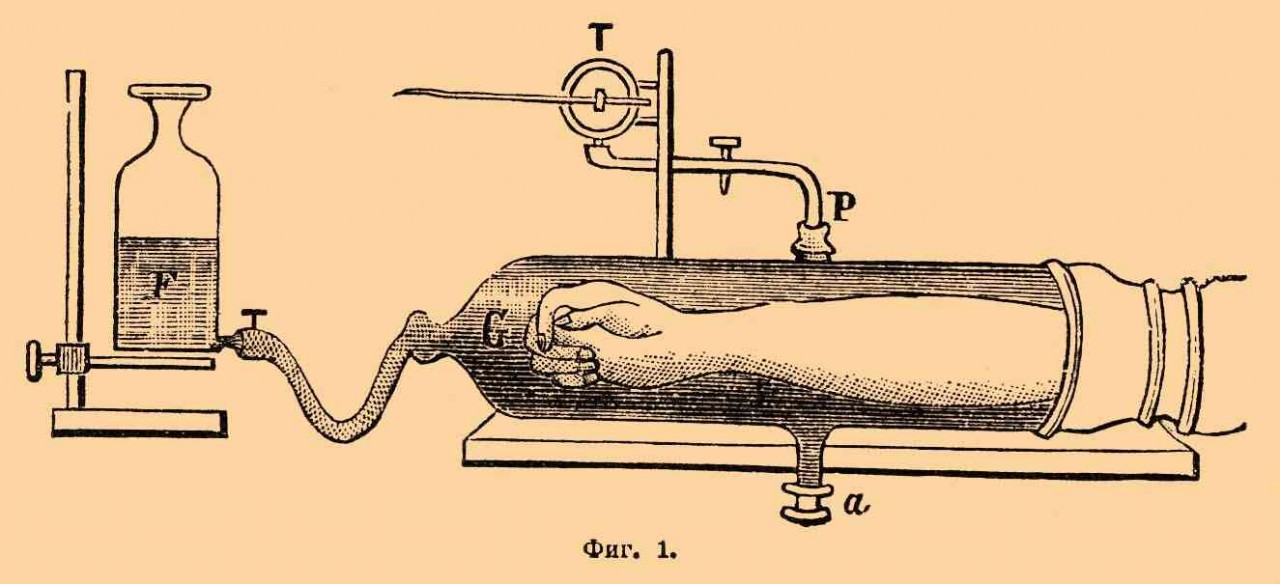
В это же время начал свои изыскания в области инструментальной детекции лжи и американский психолог Уильям Мартсон, проводивший исследования в Институте психологии Гарвардском университете. Осуществленная им полиграфная проверка была впервые принята в 1923 году в американском суде в качестве доказательства.

Первый полиграф, пригодный для расследования преступлений, был создан Джоном Ларсеном в 1921 году. Данный прибор регистрировал на движущейся бумажной ленте пульс, давление крови и дыхание. Несмотря на свою прогрессивность, он был еще далек от современных полиграфов.

Введение канала кожного сопротивления Л . Килером в 1926 году значительно повысило точность прогноза при проведении полиграфных обследований. Им же впервые был введен канал регистрации «тремора». Полиграф Л. Килера был использован в созданной им Чикагской лаборатории расследований преступлений. К 1935 году он обследовал около 2000 подозреваемых в совершении преступлений. Им же впервые была введена 5-ти канальная регистрация тремора.
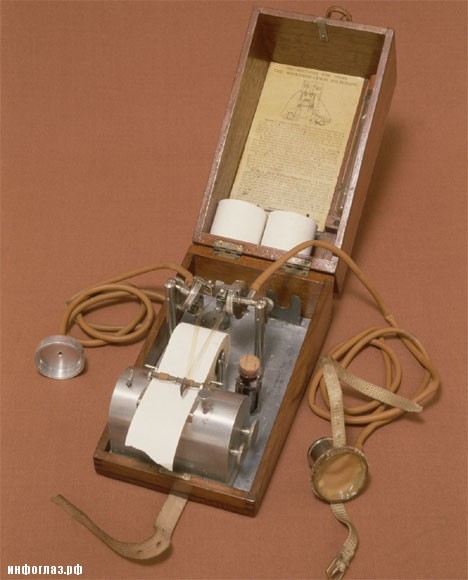
Если Ломброзо считается создателем первого полиграфа, то Килер – создатель современного полиграфа.
Первое упоминание о коммерческом использовании детектора лжи относится к 1923 году. Американский специалист-полиграфолог Беркли Ларсон провел собеседование 38 человек на предмет кражи из магазина, по заявке хозяев сети магазинов. После собеседования подозрения пали на одну девушку, которая в последствии призналась в краже на сумму 500$.
В 1932 году Дэрроу усовершенствовал эту методику, повысив информативность двигательных реакций. Но дальнейшее развитие эта методика не получила. В реальную жизнь стал уверенно входить полиграф, созданный Л.Килером.
В 1938 году был описан первый случай, когда детектор лжи был использован для экспертизы товара при рекламе лезвий бритвы «Жилетт». Эмоциональное описание процедуры гласило: Будучи подключенными, к детектору лжи сотни мужчин приняли участие в ошеломляющем исследовании, которое позволило разоблачить клевету и раскрыть истинную правду о бритвенных лезвиях. Эти мужчины побрили одну щёку лезвием «Жилетт», а другую при помощи лезвия марки заменителя. А далее были проведены графика характеризующие эмоциональное напряжения вызванное различными типами лезвий (Мастон 1938г.).
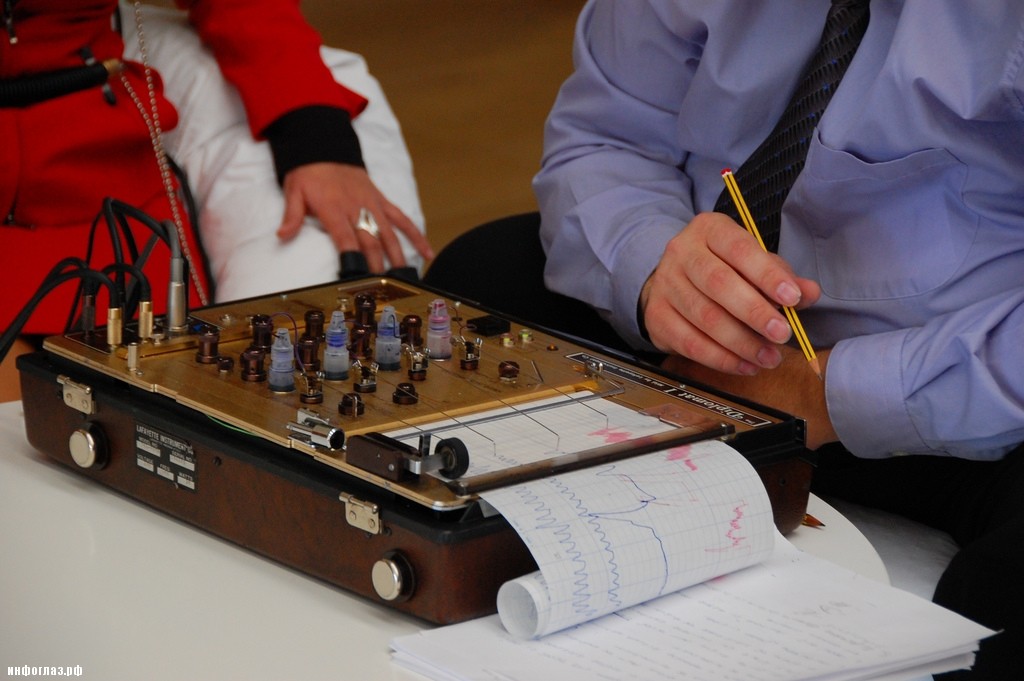
В конце второй Мировой войны в американском военном лагере в штате Нью-Джерси полиграф был использован для обследования 274 немецких военнопленных из которых нужно было отобрать кандидатов на руководящие полицейские должности в правительстве послевоенной Германии. Бригада состоящая их семи опытных операторов-полиграфологов, используя метод релевантных — иррелевантных вопросов выясняли симпатии к нацистской партии, к коммунистам, настроенность на саботаж и подрывную деятельность, связь с гестапо, СД, СА, а также причастность к совершению серьёзных преступлений.
По результатам обследования 156 человек (57%) оказались: вполне пригодными для занятия полицейских должностей, 3% случаев были сомнительны, и 110 человек (57%) были оценены как нежелательные. Было выявлено 24 члена нацисткой партии, два сотрудника.
Успех использования полиграфа послужил толчком для создания в центральном разведывательном управлении США отдела специализирующегося на проведении полиграфных проверок. Через несколько лет правительством США было принято решение о проверке на полиграфе всех сотрудников ЦРУ не реже, чем 1 раз в течение 5 лет. Впоследствии аналогичные подразделения были созданы в Министерстве обороны. В процессе становления массовых проверок в США идеология этого направления менялась значительно. В 1985 году получили большой общественный резонанс ошибки, допущенные при проведении полиграфных проверок. Это привело к принятию соответствующего закона ограничивающего использование полиграфа в государственных учреждениях и практически полное его запрещение в частном секторе. Но увеличившийся вдвое рост хищений в частном секторе, в 1988 году вынудил правительство разрешить использование полиграфа в частных фирмах. Сейчас количество проверок в США превысило 8 млн. в год.
В СССР психолог Александр Романович Лурия (позднее — академик АПН СССР) совершенствовал весьма популярный в экспериментальной психологии тех лет ассоциативный метод и, работая в специальной лаборатории при Московской губернской прокуратуре, применил метод для выявления скрываемой информации у лиц, совершивших тяжкие преступления.
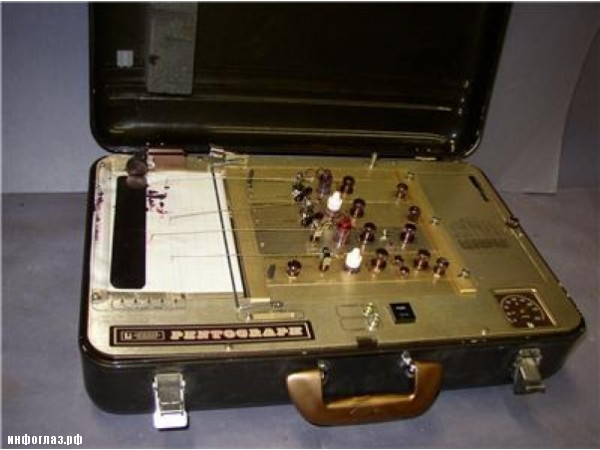
Александр Лурия в 20-х годах прошлого века разработал методику, позволяющую зафиксировать возникновение эмоциональных состояний в динамике речевых и двигательных процессов человека даже в тех случаях, когда он пытался скрыть испытываемое им эмоциональное напряжение. Под руководством А.Р. Лурия в Московском институте психологии им. К.Н. Корнилова была организована лаборатория по изучению аффективных реакций, в которой, начиная с 1924 года, он совместно с молодым еще тогда величайшим отечественным психологом 20-го столетия Алексеем Николаевичем Леонтьевым (первый декан психологического факультета МГУ) провел серию экспериментальных работ.
Испытуемым зачитывалась фабула преступления, а затем давалось задание скрыть информацию о совершенном преступлении. Обследуемым предъявлялось 70 слов, из которых 10 — являлись критическими, т. е. непосредственно относились к делу. Во время процедуры испытуемый должен был отвечать любым словом, схожим по смыслу и при этом нажимать на кнопку. Выяснилось, что испытуемые не знавшие фабулы преступления на нейтральные и на контрольные стимулы затрачивали примерно одно и тоже время, тогда как испытуемые, которым фабула была известна, на контрольные слова затрачивали значительно большее количество времени.
С 1927 года А.Р. Лурия стал проводить аналогичные эксперименты с подозреваемыми в совершении убийств.
В 30-е годы все работы по применению детектора лжи в СССР были прекращены. Полиграф был объявлен лженаучным экспериментом с эмоциями допрашиваемого. Возобновились они лишь в 60-е годы, а в 70-е были свернуты вновь.
Продолжали интересоваться этой тематикой только спецслужбы, которые подробно анализировали опыт применения полиграфа в США. Они же создали в середине 80-х годов первые образцы отечественного компьютерного полиграфа. В 1975 году Председатель КГБ СССР Ю.В.Андропов подписал приказ об организации в структуре органов госбезопасности профильного подразделения по проведению полиграфных проверок. Первыми руководителями этого подразделения стали Юрий Константинович Азаров и Владимир Константинович Носков. Однако, научно-прикладная работа по проблематике полиграфа, проводимая в 1970 – 1980-е годы в системе органов госбезопасности, в силу своей закрытости не получила в СССР какой-либо огласки в научной и в научно-популярной печати, а о широком и открытом применении полиграфа не могло идти и речи.
Первый чернильно-пишущий полиграф в СССР, был создан в 60-е годы работником Краснодарской краевой психоневрологической больницы, ныне доктором биологических наук, академиком В.А. Варламовым. В период с 1968 по 1973 и с 1979 по 1996 годы — сотрудник НИИ МВД. Им же в 1986 году сделан первый компьютерный детектор лжи «Барьер».
Радикальные изменения в сфере использования технологии полиграфных проверок начались лишь к концу 1989 года, когда в Министерстве внутренних дел с целью изучения перспективы внедрения полиграфа в деятельности органов внутренних дел, была создана рабочая группа из состава сотрудников Центрального аппарата. В марте 1990 года в Польшу, для ознакомления с положительным опытом польских коллег в раскрытии преступлений с использованием полиграфа были откомандированы В.В. Гордиенко и С.В. Игнатов. Группа пришла к выводу о целесообразности применения полиграфа в МВД и представила руководству Министерства отчет с рекомендациями.
В период 1990-1991 г.г. происходит сближение позиций руководства КГБ СССР и МВД СССР по вопросам применения полиграфа в деятельности указанных ведомств. На базе НИИ КГБ СССР началась подготовка группы сотрудников МВД СССР. Однако, в следствии событий 19-21 августа 1991 года, приведших к развалу Советского Союза, процесс обучения был прерван.
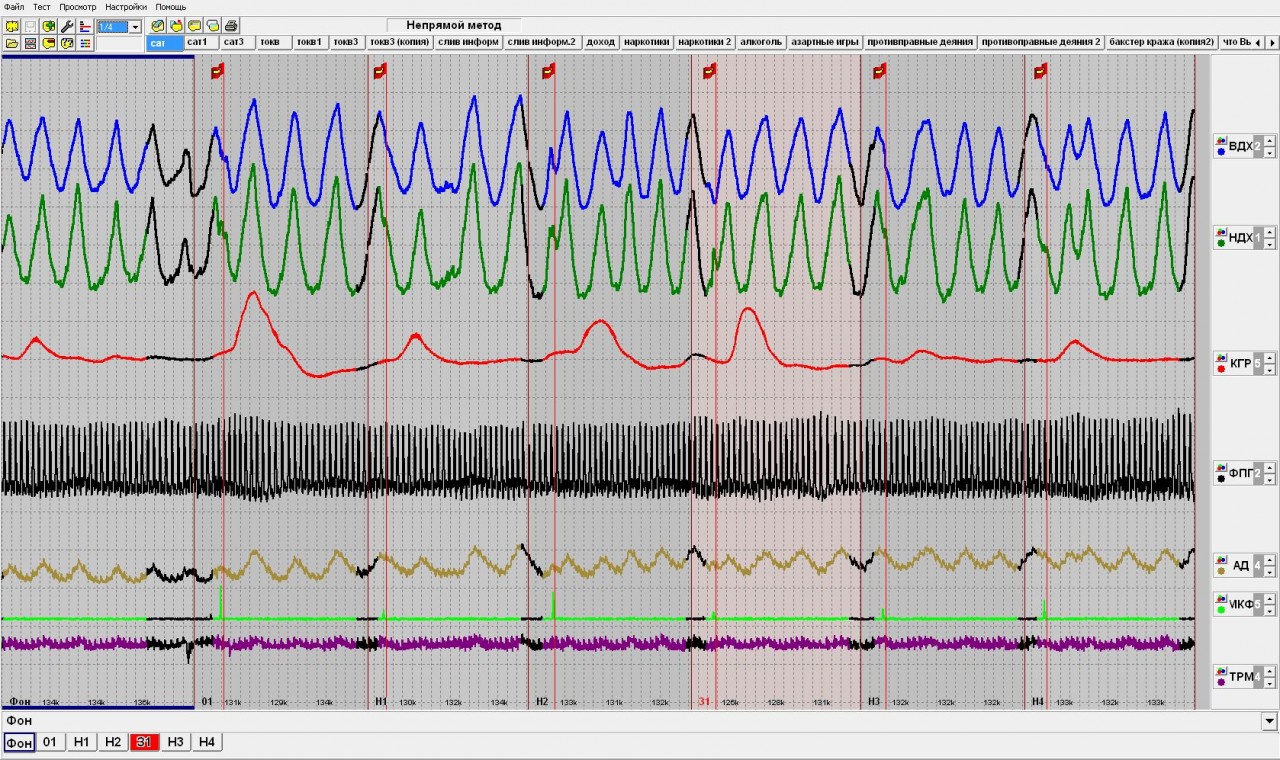
Во второй половине 30-х годов созданные в США детекторы лжи и технология их применения впервые начинают экспортироваться за рубеж.
В Польше полиграф появляется в 1936 г.: его приобретает варшавский Институт психогигиены. И хотя исследователи проявили интерес к применению полиграфа в следственной работе (о чем свидетельствует одна из публикаций, появившаяся в печати в 1939 г.), начавшаяся война отодвигает внедрение полиграфа в Польше на четверть века.
В начале 40-х годов полиграф появляется в Китае, для которого в 1943 г. в США подготовили несколько специалистов. После окончания гражданской войны в Китае специалисты по работе с полиграфом и сами приборы были вывезены на Тайвань.
Япония, в отличие от Китая, самостоятельно проводила начатые в 20-е годы исследования аппаратурного метода детекции лжи: психологи Акамацу и Тогава изучали диагностические возможности изменений электрических свойств кожи (так называемый кожно-гальванической рефлекс), и эти работы увенчались успехом. В 1937 г. японские ученые сообщили о создании своего детектора лжи — психогальванометра. Любопытно отметить, что подобно США, первое применение японского детектора лжи произошло в конце 30-х годов при расследовании дела о шпионаже. В годы Второй мировой войны одна из фирм стала серийно выпускать психогальванометры для целей детекции лжи, которыми (уже в послевоенные годы) были оснащены подразделения японской полиции.
Индия впервые проявила интерес к проверкам на детекторе лжи в 1948 г. в связи с убийством Махатмы Ганди: прошедший шестинедельную подготовку в США офицер индийской полиции использовал полиграф для сужения круга лиц, подозревавшихся в причастности к заговору. После нескольких случаев использования в ходе расследований, применение полиграфа было приостановлено вплоть до начала 70-х годов.
В 1993 г. закончилось длившееся несколько десятилетий отрицание возможности применения психофизиологического метода «детекции лжи» в правоохранительных целях в России. Министерство юстиции ввело в действие первый в стране правовой акт, регламентировавший применения полиграфа в органах Федеральной службы безопасности, и, тем самым, легализовало прикладное использование этого метода в России.
28 декабря 1994 года подписан приказ МВД России «Об утверждении инструкции о порядке использования полиграфа при опросе граждан». Практически с этого момента отечественная полиграфология трансформировалась в открытую и динамично развивающуюся высокотехнологичную индустрию.
В 1996 г. — началось внедрение полиграфа в деятельность органов налоговой полиции.В 1998 году — в деятельность Министерства юстиции и Министерства обороны.
В последние годы пользователями полиграфа все чаще становятся подразделения военной прокуратуры.Полиграфные проверки в частных структурах начались примерно в 1994 году.

Даже первый директор ФБР Джон Эдгар Гувер знал, что полиграф не годится для выявления лжи. Он аннулировал этот тест.
В статье для журнала “The Skeptical Inquirer” Зеликофф, пишет, что оператор полиграфа – это своего рода подставной актер или гипнотизер, который пытается задобрить (или запугать) людей, чтобы они поверили в то, что устройство способно поймать их на малейшей непоследовательности».
Объект проверки нервничает, будучи пристегнутым ремнями к креслу, и часто подпадает под внушение из-за атмосферы, окружающей этот дешевый трюк. В результате он превращается в податливый материал в руках оператора машины, который затем начинает обширный навязчивый и незаконный допрос», пишет Зеликофф».
Объекту проверки время от времени говорят, что машина «показывает обман». Конечно же, это не так. Человека постоянно заставляют уточнять свои ответы, при этом он выдает все больше и больше личной информации». В произвольный момент оператор устройства прерывает проверку, консультируется с катушками миллиметровой бумаги и выносит совершенно субъективное решение о том, был ли ответ объекта ложным.
«Каждый студент-медик уже на первом курсе знает, что на четыре показателя, измеряемых полиграфом (артериальное давление, пульс, потоотделение, и частота дыхания) влияет несчетное множество эмоций: радость, ненависть, восторг, печаль, тревога, депрессия и тд, – объясняет Зеликофф. Но нет ни одной, ни единой главы ни в одной медицинской книге, которая связывала бы эти параметры с намерением обмануть. Более того, десятки исследований за последние 20 лет на факультетах психологии и в медицинских учебных заведениях по всему миру показали, что полиграф не может определить, когда говорят правду, а когда лгут».
Знатоки дела Вен Хо Ли наверняка помнят, что однажды ФБР обмануло тайваньского физика-ядерщика (обвиняемого в шпионаже в пользу китайцев в Лос-Аламосе), заявив, что полиграфические тесты показали, что он лжет. Полицейские то и дело прибегают к такого рода трюкам – подделывают результаты судебно-медицинской экспертизы, а затем суют её под нос подозреваемому и кричат, что ложь доказана, и что лучше сразу же подписать признание.
Наиболее полный обзор полиграфа провело в 1983 году Бюро оценки технологий, научно-исследовательское отделение конгресса. Заключение звучало так: “Не существует известной физиологической реакции, которая была бы присуща только обману”.
В докладе действительно отмечалось, что ЦРУ и другие силовые структуры “считают, что полиграф является полезным инструментом проверки”. Тем не менее, Бюро пришло к выводу, что имеющиеся результаты исследований не подтверждают научную обоснованность использования полиграфа для данной цели.
Единственной похвалой полиграфу было то, что он может иметь некоторую пользу в «конкретных уголовных инцидентах». Но далее в докладе упоминалось, что хотя в таких случаях проверка на детекторе лжи обнаруживает обман лучше, чем случайность, коэффициент ошибок может быть весьма существенным.
«Что касается предположительно разоблачающих физиологических реакций, исследования конгресса показывают, что их можно скрыть с помощью движения, наркотиков или другим способом, чтобы избежать обнаружения обмана».
Есть множество жутких историй о федеральных служащих, которые подверглись насилию со стороны полиграфа и его операторов. Возьмем, к примеру, ветерана ВМС Дэниэла М. Кинга, прослужившего 19-лет, и подозревавшегося в передаче секретной информации. Кинг был заключен в военную тюрьму в одиночную камеру на 500 дней, несколько раз проходил проверки на полиграфе. Некоторые из них продолжалось до 19 часов. Военный судья отклонил все выдвинутые против него обвинения.
Несколько лет назад агент ФБР Марк Мэлла проходил рутинный тест на детекторе лжи. Полиграфист, который имел всего лишь 80-часовой опыт работы с машиной, пришел к выводу, что Мэлла солгал. (Зеликофф отмечает, что даже парикмахер должен пройти как минимум 1000 часов обучения, прежде чем получить разрешение на стрижку волос).
Его жизнь вскоре превратилась в историю в духе Кафки. Он был лишен значка, его дом подвергался полуночным обыскам, его ежедневник и дневник деловых встреч были изъяты и тщательно изучены, его соседей, друзей и родственников допросили, и каждый его выход из дома контролировался с вертолетов. В конце концов, жизнь Мэлла была практически разрушена, но никакие обвинения не подтвердились. ФБР, наконец, извинилось и в 1988 году Конгресс запретил использование полиграфа для расследования дел гражданских служащих.
Стоит отметить, что братья Уокеры и Олдрик Эймс безо всякого труда обманули полиграф. А Ким Филби перед проверкой унял волнение ложкой валиума.
Одна из дознавателей защиты в Калифорнии сообщила, что, хотя использование полиграфа не допускается в большинстве судов, он все время используется прокурорами, в основном, чтобы заключать сделки о признании вины. «Это опасно, потому что вердикт полиграфа почти полностью зависит от оператора, – говорит она. – Есть хорошие полиграфисты, но многие из тех, кто работает на районных прокуроров, проходят лишь минимальное обучение».
Следователь описал недавний случай, произошедший со свидетелем защиты по делу об убийстве, который проходил тест на детекторе лжи под контролем бывшего полиграфиста ФБР с 20-летним стажем. Его направили к окружному прокурору для повторного теста с экзаменатором – относительным новичком в работе с устройством.
Здесь нужно уточнить, что адвокаты не имеют права находиться в комнате во время проверки, даже если проверяются показания их клиентов. Прокуроры записывают этот процесс на видео, и хотя результаты полиграфа не могут быть использованы в суде, видеозапись может стать доказательством.
В том случае адвокат ждал в холле, пока свидетель не вышел из комнаты красный, как рак. Адвокат слышал, как следователь окружного прокурора угрожал свидетелю: «Ах ты сукин сын, я знаю, что ты врешь. Мы отзовем твое условно-досрочное освобождение». Эксперт окружного прокурора интерпретировал данные по одному из его ответов, как «ложные».
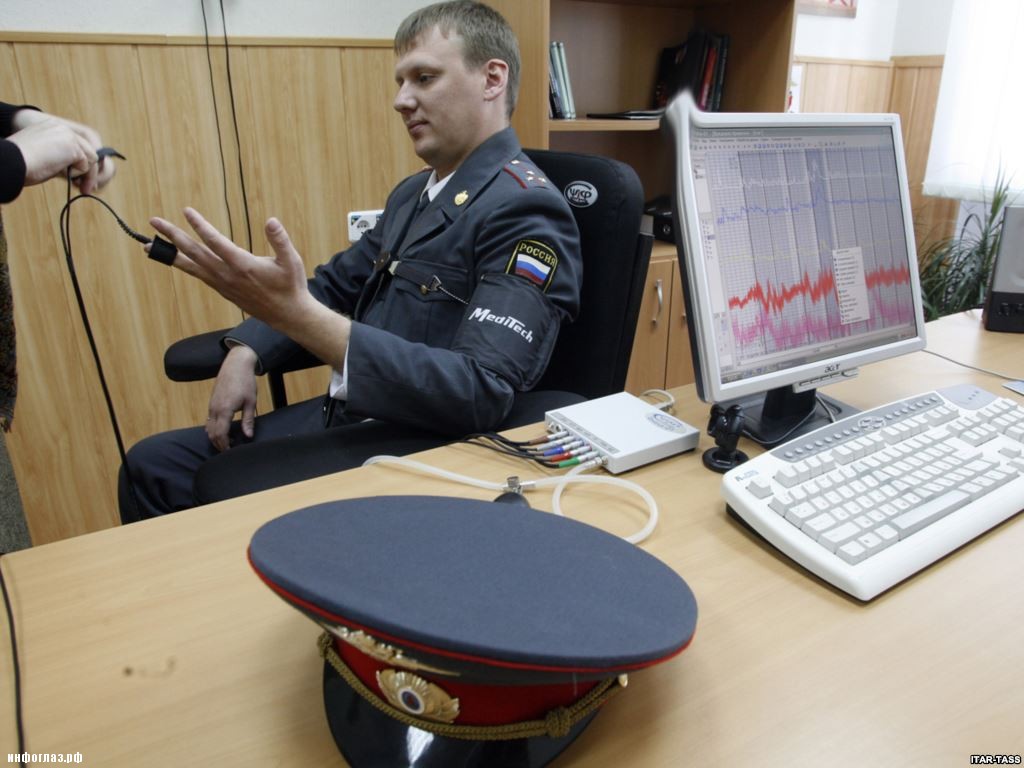
Факт 1:
Зачастую полиграф называют детектором лжи, но этот термин некорректен, поскольку вводит общественность в заблуждение. Полиграф не читает мысли и не обнаруживает ложь, а всего лишь регистрирует физиологическую активность и изменения ее параметров. Он выявляет не ложь, а только возбуждение, которое с определенной долей вероятности может свидетельствовать о лжи. По физиологическим реакциям нельзя точно установить природу вызвавшего их процесса (положительная или отрицательная эмоция, ложь, испуг, боль, какие-либо ассоциации и т. д.). В настоящее время нет никакой другой возможности обнаружить ложь, кроме как опосредованным путем, поскольку 100%-надежного паттерна физиологической активности, характерного для лжи, просто не существует.
Факт 3 :
Однажды вечером восемнадцатилетний Питер Рейли вернулся домой и обнаружил свою мать мертвой. Он решил, что она была убита, и позвонил в полицию. После беседы с Рейли полиция заподозрила его в убийстве собственной матери. Было назначено тестирование на полиграфе. Полиция сообщила Питеру о неудачном прохождении теста, таким образом указав, что он был виновен, даже несмотря на отсутствие воспоминаний о происшедшем. Изучение копий допросов показало, что Рейли прошел удивительный путь сихологической трансформации, начиная с полного отрицания вины до ее признания и, наконец, к изменению первоначальных показаний («Ну хорошо, все действительно выглядит так, как если бы я это сделал») и полному письменному признанию. Двумя годами позже независимое расследование установило, что Рейли не мог совершить убийство и что признание, которому даже он начал верить, было на самом деле ложным.
Факт 4:
В последствии психологи доказали, что подозреваемые сами могут начать сомневаться в своей невиновности, поскольку верят в миф о суперэффективности полиграфа. Перед началом тестирования оператор полиграфа убеждает подозреваемого в точности прибора и невозможности совершения ошибки. Более того, после проведения тестирования полиция обычно сообщает подозреваемому, что получены точные результаты.
Некоторые подозреваемые этому верят. Иногда невиновные подозреваемые сознательно делают ложное признание после того, как объявляются виновными по результатам полиграфического теста. Одна из причин связана с тем, что они не видят возможности убедить присяжных или судью в своей невиновности и поэтому решают признаться, в надежде получить менее строгое наказание.
Факт 5:
Целесообразность применения полиграфа в целях отбора персонала до сих пор не доказана. Одной из причин является то, что при отборе работодатель интересуется общей информацией о кандидате. Например, честен ли он и случалось ли соискателю что-либо украсть.
Полиграф не способен точно ответить на этот вопрос, так как с его помощью можно задавать только специфические вопросы о конкретных событиях, произошедших в конкретное время. Общие вопросы можно задавать в последовательности контрольных вопросов.
Однако вероятность получения неверных результатов увеличивается тем больше, чем более обобщенными становятся сами вопросы. Полиграфический тест может предоставить информацию о поведении испытуемого в прошлом (например, тест может показать,
обманывал ли соискатель во время заполнения анкеты, пробовал ли он наркотики в молодости и т.п.), но для работодателей чаще всего важнее, каким будет поведение соискателя в будущем, а также его профессиональные качества. Полиграф ничего не может здесь ответить, и это ограничивает надежность его использования для отбора персонала.
Факт 6:
Самый скандальный случай использования полиграфа в бизнесе произошел в 1987 году, при расследовании кражи в телекомпании CBS. Эта компания обратилась за помощью к четырем нью-йоркским фирмам, занимающимся проверками на полиграфе, чтобы установить, кто из сотрудников украл дорогую фотокамеру. На этапе предварительной подготовки менеджер компании заблаговременно сообщал, кого из сотрудников он подозревает в преступлении. После исследования на полиграфе оказалось, что специалисты-полиграфологи указывали именно на этих сотрудников как на совершивших кражу, хотя они были невиновными.
Это был чистой воды фарс: на самом деле фотокамера не пропадала, и все служащие компании прекрасно об этом знали. Просто им была дана инструкция отрицать кражу (то есть говорить правду). В качестве поощрения сотрудникам пообещали по 50 долларов к жалованию, но только в том случае, если тест на полиграфе будет успешно пройден. Когда специалисты по тестированию на полиграфе приезжали проводить испытания (в разные дни), каждому из них сообщалось, что подозрения менеджера компании вызывает конкретный сотрудник. При этом каждому проверяющему называли другого человека.
В конечном итоге каждый из четырех экспертов с уверенностью «выявил» преступника, и в каждом случае это был именно тот сотрудник, на которого перед проведением тестирования указывали как на подозреваемого. Полиграфологи не были специально настроены на такой результат. Просто на них оказала неосознанное влияние та предварительная информация, которую они получили.
Факт 7:
Помимо предположений о возможной виновности испытуемых на результат проверки на полиграфе могут повлиять другие субъективные факторы, например, симпатия или жалость к подозреваемым. Полиграфолог начнет бессознательно «подыгрывать» испытуемому и возможно, что в этих случаях результат «считается виновным» появится с меньшей вероятностью. И наоборот, если вы вызываете у оператора полиграфа неприязнь и отвращение по каким-то причинам, то повышается вероятность того, что в результате тестирования вас признают виновным.
Факт 8:Можно ли обмануть детектор лжи? Да, это возможно. Существуют различные виды обмана полиграфа, как, например, покусывание языка, напряжение в ногах (путем давления большими пальцами ног на пол), мысленный счет овец или счет в обратном порядке.
Эти действия приведут к физиологическим реакциям, которые зарегистрирует полиграф. Поступая таким образом, испытуемые могут искусственно увеличить физиологические реакции в ответ на контрольные вопросы и тем самым повысить вероятность прохождения теста. Результат счета овец или счета в обратном порядке (конечно, не вслух, а про себя) будет таким, что испытуемые не смогут
осмыслить заданные экзаменатором вопросы или перечисленные альтернативы, что приведет к неопределенному результату прохождения теста Использование «вопросов-наполнителей» (например, в тесте контрольных вопросов) может помешать осуществлению этого приема, поскольку предполагается, что испытуемые ответят «да» на наполнители и «нет» на другие вопросы. Это заставляет испытуемого думать и осмысливать информацию, поскольку ответ «нет» на наполнитель может показать, что вопросы игнорируются.Факт 9:
Существует мнение, что психопаты могут более эффективно обманывать детектор лжи, чем здоровые люди. Уровень возбуждения у психопатов и патологических врунов при сообщении лжи не повышается и поэтому выявить ложь у них невозможно. Помимо
различий между психопатами и здоровыми людьми, обнаружены различия в тестировании на полиграфе между интровертами и экстравертами.
Факт 10:
Самый знаменитый тест на противодействие детектору лжи был проведен Флойдом Феем по прозвищу «Летун». Он был ошибочно осужден за убийство после неудачного прохождения проверки на полиграфе. Невиновность Фея была установлена лишь спустя несколько лет. Во время своей необоснованной отсидки в тюрьме он решил отомстить обидчикам и стал экспертом по тестированию на полиграфе. Флойд обучил 27 заключенных, которые добровольно признались ему в совершении преступления, как пройти тест контрольных вопросов. После 20-минутного занятия 23 заключенных из 27 успешно прошли тест на полиграфе, который показал их невиновность.
Факт 11:исследовании, проведенном в 1994 году, испытуемые в течение 30 минут обучались использовать либо физические противодействия (покусывание языка или давление пальцами ног на пол), либо умственные (мысленный счет в обратном порядке, начиная с семи). После этой обучающей сессии они проходили тестирование на полиграфе. Умственные и физические противодействия были одинаково эффективными, позволяя примерно 50% испытуемым обмануть полиграф. Более того, экзаменатор (который был опытным специалистом) только в 12% случаев заметил применение физического противодействия, тогда как ни один из испытуемых, воспользовавшийся умственным противодействием, не вызвал подозрения экзаменатора ни своим поведением, ни физиологическими реакциями. Эти данные противоречат рекламным заявлениям полиграфологов, что любая попытка использования техник обмана всегда будет ими обнаружена.
Факт 12:Шпионы и сотрудники спецслужб обучены обманывать полиграф. Известен пример с Олдричом Эймсом, сотрудником ЦРУ, который в течение многих лет продавал секреты Советскому Союзу и за эти годы прошел несколько полиграфических тестов. Эймс так долго преуспевал в своей шпионской карьере в т.ч. и потому, что его способность обманывать полиграф рассеивала любые подозрения должностных лиц ЦРУ.
Связной Эймса из КГБ Виктор Черкашин в последствии рассказал в интервью британской газете The Sunday Times, как он помогал Эймсу проходить полиграфические тесты. Черкашин устроил Эймсу ланч с русским дипломатом. К удивлению Эймса, на ланче присутствовал и сам Черкашин. Эймс забеспокоился, так как ФБР знала Черкашина и наблюдала за ним. Однако Черкашин пришел на ланч специально. Он знал, что ЦРУ часто проводит со своими сотрудниками плановые полиграфические тесты, и ему было известно, что Эймсу будет задан такой вопрос: «Был ли у вас недавно неформальный контакт с сотрудниками КГБ?», поскольку это был стандартный вопрос.
Так как контакты между Эймсом и сотрудниками КГБ были засекречены, Эймсу пришлось бы обманывать. Однако после ланча Эймсу не нужно было больше лгать и он мог спокойно сказать, что с ним вступили в контакт.
Факт 13:В Великобритании, после громкого шпионского скандала, правительство объявило о своем намерении провести пилотажные исследования эффективности тестирования на полиграфе. Ряд известных психологов образовали рабочую группу под руководством профессора Т. Гейла. В задачу группы входило предоставить отчет о статусе тестирования на полиграфе. Отчет рабочей группы Британского психологического общества по использованию полиграфа содержал сенсационные результаты и поверг многих в шок. Психологи поставили под сомнение практически все аспекты работы полиграфа, в первую очередь точность результатов.
Так, процедуры проведения тестирования не были стандартизированы в той степени, которая может считаться удовлетворительной в терминах научной психометрики. Также исследователи
столкнулись с трудностями проверки методики и практики проведения тестирования разными специалистами по использованию полиграфа. Это означает, что процесс принятия решения является субъективным, поскольку полностью зависит от специалиста, который непосредственно проводит тестирование.
Более того, он не поддается проверке. Другим специалистам трудно понять, почему конкретный
полиграфолог пришел к данному выводу. Также комиссия решила, что некоторые аспекты тестирования на полиграфе, в частности введение в заблуждение испытуемого во время теста контрольных вопросов, вступают в противоречие с британским законом и моральными нормами, тем самым делая результаты тестирования недопустимыми к рассмотрению на заседаниях британского суда. Правительство Великобритании отказалось от планов введения тестирования на полиграфе.
А вот тут можете почитать обсуждение про полиграф в блоге  ntv
ntv
источники
Источник перевод для mixstuff – Ксения Гусакова
http://www.vympel-polygraph.ru/str/about/hystory.htm
http://gajitz.com/pants-on-fire-weird-but-true-history-of-the-polygraph/
http://onlyfacts.ucoz.com/publ/interesnye_fakty_o_poligrafe_detektore_lzhi/1-1-0-80
https://www.google.ru/?gfe_rd=cr&ei=5ZMvWa7GJ6ni8Af95LL4CQ#newwindow=1&q=%D0%BA%D1%80%D0%B8%D1%82%D0%B8%D0%BA%D0%B0+%D1%81%D0%B8%D1%81%D1%82%D0%B5%D0%BC%D1%8B+%D0%BB%D0%B0%D0%B9%D0%BA%D0%BE%D0%B2+%D0%BD%D0%B0+%D1%84%D0%B5%D0%B9%D1%81%D0%B1%D1%83%D0%BA%D0%B5
Дочитали до конца.